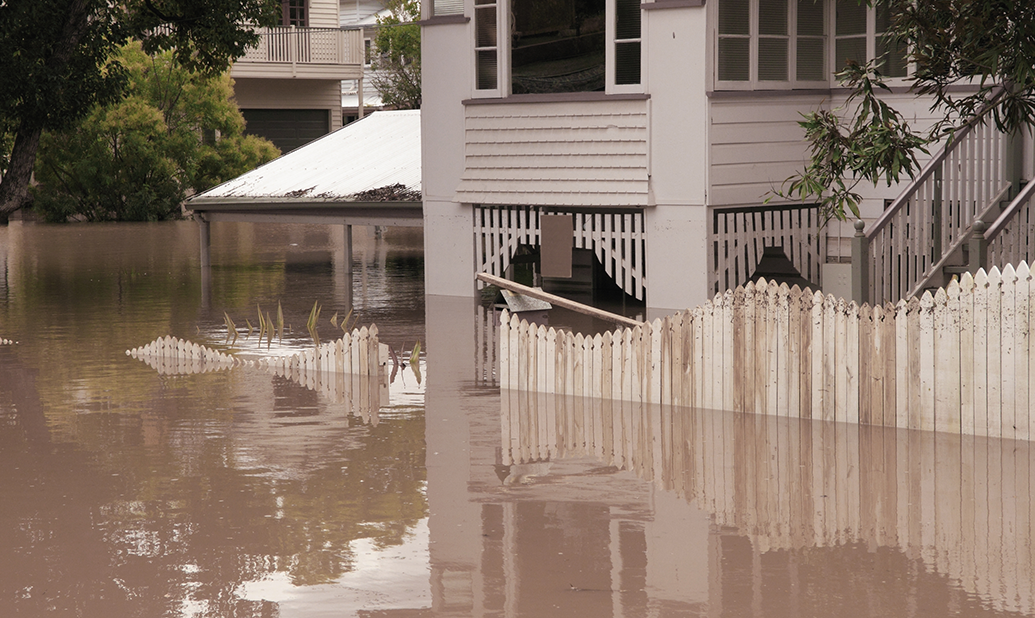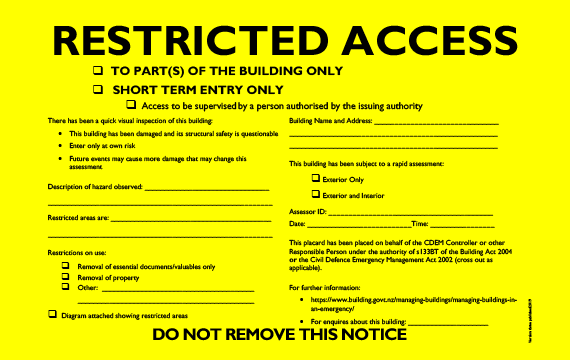A red sticker means no one is allowed to enter the building because of the high level of risk. This risk might be the building itself, but it might also be from nearby buildings or unstable land. A builder who wants to assess the site for remedial action will need special clearance from the local council.
Yellow Sticker
A yellow sticker means that entry to the building is restricted, except under supervision for a limited time or on essential business. This could be for assessment purposes, which means a builder could inspect the property and evaluate what remedial work is required.
You will need to coordinate any visit with the owners, the council and the insurance company, which will require a detailed quote for any remedial work required.
Yellow Sticker - Restricted Access
White Sticker
A white sticker means the building "may be damaged" but is safe to occupy. You can access these sites by arrangement with owners to assess any damage and estimate the cost of remedial work. Many white stickered properties may have sustained minimal water damage in the garage or minor surface flooding.
Follow-up assessment
Initial assessments carried out by Civil Defence are rapid – taking about 20 minutes – and can sometimes be completed by inspectors from outside the building without needing to enter.
After the rapid assessment process, Civil Defence emergency management and council officials can direct the owner of a building to obtain a detailed assessment of the building. These assessments are the responsibility of a building owner and will usually involve input from the owner's insurance company.
Insurance companies often have "preferred suppliers" and may direct the homeowner to use tradespeople, designers and geo-tech engineers on their "preferred" list.
Put your safety first
If you are assessing a damaged building or plan to do remedial work, you must take all possible measures to safeguard yourself and your team. While SiteSafe has rules and guidelines for work site safety, there are some additional steps you should take when dealing with flood and storm-damaged buildings. Read the guide by CHASNZ on how to keep safe while working on flood damaged property.
If you are assessing a damaged building or plan to do remedial work, you must take all possible measures to safeguard yourself and your team.
What can be salvaged and re-used?
Flood-damaged homes are particularly challenging when deciding what can be salvaged and re-used. Building Business recently published a story evaluating the pros and cons of demolishing a home versus deconstructing it.
Read the demolishing a home versus deconstructing it story here.


